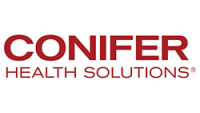4 opportunities to improve mid-cycle revenue operations
The quality of a hospital’s revenue cycle processes directly impacts the health of its bottom line. In an age of stagnant margins, hospitals should do all they can to improve revenue cycle efficiency.
The mid-cycle—that critical phase between patient registration and claims submission — is a great place to start. Numerous challenges arise during this segment of the revenue cycle that can negatively affect revenue generation and cash flow. The following are four of the top challenges and opportunities for improvement.
- Coding. To determine whether you have coding issues, look no further than the number of denied claims you encounter. Denied claims have reached an all-time high for many hospitals as payers use more sophisticated algorithms to perform automated reviews, more complex criteria for claims submission and medical necessity and more variables in their contracts. Today, around 11% of all claims are denied, although some providers are seeing them as high as 30%.
Other signs of coding issues are underpayments or overpayments, growing backlogs, and decreasing per-visit revenue. Poor denial rates should serve as a red flag. The industry best practice denial rate is less than 5%.
Hospitals should implement a coding quality assurance program that includes ongoing training, certification requirements and staff incentives to improve coding accuracy and compliance and reduce denials. KPIs should be implemented so staff can monitor their performance. Coding software is also helpful as it proactively checks for coding and compliance issues so they can be corrected before submission. This helps reduce rejections and denials and assists staff in meeting their KPI goals.
- Documentation. Complete and accurate documentation is vital for timely patient care and proper reimbursement. Yet payer documentation requirements have become more complex and more stringent. One of the challenges for coders is trying to understand illegible physician notes or unclear information in the EMR. Approaching a busy physician to ask for clarification can be uncomfortable. Sometimes physicians overlook the importance of documentation in the reimbursement process. Guessing what the physician meant should never be an option for coders as it will likely lead to more work in the future.
Implementing a clinical documentation improvement (CDI) solution is the most effective way to improve documentation quality. The best solutions are those that create a culture of documentation excellence. As with coding, documentation quality should be tied to training — including staff and physicians — and KPIs. A process should be created to support good communication and a “we’re in this together” relationship between coders and physicians. Technology in the EMR that drives more accurate diagnosis codes can also be helpful.
- Revenue Leakage – Charge Integrity. Appropriate charge capture, meaning the charge is complete, correct and supported by the proper documentation, is essential for timely reimbursements and accurate patient statements. Industry benchmarks indicate that capturing charges should take, at most, three to five days after the service date. Late charges as a percentage of the total charges should be 2% or less of all charges.
The most impactful step hospitals can take to improve charge capture and reduce revenue leakage is to require charts to be completed within 24 to 48 ours after a visit. However, adding one or two days may be appropriate if there is an interface.
Another opportunity for improving charge integrity is to use automation technology that continuously audits processes and flags potential issues so they can be quickly addressed before they have a chance to interrupt the revenue cycle. This can help reduce additional work for staff while also making them more productive.
- Cost Management. In these challenging times, effectively managing costs is critical to financial viability. The first step is identifying opportunities to reduce unnecessary costs. First and foremost, hospitals should look at labor costs in correlation to productivity and quality in the revenue cycle. This should include an analysis of labor and productivity by geography. It may make sense to consolidate certain roles where labor costs and living costs are lower. Now that a hybrid workforce has been widely adopted, leveraging remote workers — even offshore workers — may make sense.
Managing vendor costs is also important. Research shows that almost a third of hospitals use two or more revenue cycle vendors. Of those, 5% use more than four. To ensure they receive the best ROI, hospitals should choose vendors that leverage the latest intelligent process automation technology to streamline mid-cycle revenue cycle processes, improve productivity and reduce costs. The most effective vendor technologies will be those that seamlessly integrate into the hospital’s existing systems.
A More Effective Mid-Cycle
A healthy bottom line requires an optimally functioning revenue cycle. Improving coding quality and documentation through education and technology, ensuring charge capture integrity and cost management through automation and analyses, enables hospitals to not just survive, but thrive during these challenging times.






